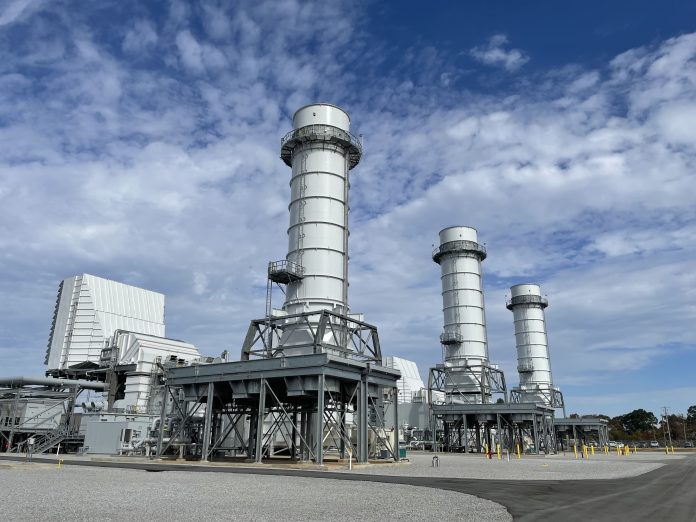HUNTSVILLE — A year ago this weekend, the Tennessee Valley was cast into darkness during a historic winter storm.
To help ensure this won’t be a winter to remember, the Tennessee Valley Authority has invested nearly $123 million in the last three months alone to harden its system and enhance the reliability and resiliency at its coal, gas and hydro plants.
“Mother Mature is unpredictable and may hit us hard again this winter,” said TVA spokesperson Clarissa McClain. “We’ve learned from Winter Storm Elliott and the improvements we’ve made since last winter help ensure that we can safely and reliably provide power to our 10 million customers across the valley this winter and beyond.
“For FY 2024, TVA is committing an additional $120 million above regular funding levels to focus specifically on enhancing the reliability of the generation fleet.”

Last Dec. 24, high winds and single-digit temperatures blasted the agency’s power plants and forced it to order rolling blackouts for the first time in its history. TVA said the blackouts lasted for two hours on Dec. 23 and for six hours on Dec. 24.
Decatur Utilities said approximately 15,000 of its nearly 27,000 electric customers were affected Dec. 24. In Huntsville, more than half of Huntsville Utilities customers lost power.
Since then, the TVA invested $8 million on insulation and heated cables at its facilities. In the last three months alone, October through December, it has invested $123 million in the reliability of its coal, gas and hydro facilities, McClain said.
This summer, TVA brought the $500 million Colbert Combustion Turbine Plan online.
“The expansion of the three units adds about 750 megawatts of modern new natural gas generation capacity to TVA’s generation fleet – enough dispatchable electricity to power more than 400,000 homes, McClain said. “It began commercial operation this summer, ahead of schedule and under budget.”
She also said three units at Paradise Combined Cycle Plant in Kentucky, which can also generate 750 megawatts, are gearing up to start commercial operation in the coming weeks.
“Both plants are expected to help us quickly adjust when demand increases,” McClain said.
On Dec. 23, the demand was a historic high of 33,427 megawatts or, in layman’s terms, enough electricity to power up to 35 million homes at once.

TVA modernized heat trace lines at its 17 gas plants and four coal plants have been modernized. Heat trace is a thin, flat rubber cable containing conductive wires that heat up when electricity passes through them. It’s strung alongside pipes and sensitive instruments to help keep them from freezing.
TVA has also installed 443 wind breaks and enclosures to protect equipment from cold air. These include everything from heated shelters to tent-like temporary enclosures and heavy plastic butcher curtains like you might see in a walk-in cooler.
Another 339 preventive maintenance tasks have been carried out. These have focused on servicing heaters, staging auxiliary heaters and other emergency response equipment, and installing far more robust desiccant drying systems to protect critical air flow pipes and valves.
“We’re doubling our efforts to remove the moisture from the air,” said Derrick Shaw, a combustion turbine technician at Gallatin Combustion Turbine Plant in Sumner County, Tenn. “If the air is dry, it will not freeze in temperatures typically experienced in extreme winter weather.”
These are among the nearly 3,400 winter readiness activities that employees have completed, McClain said.
“TVA’s winter readiness overhaul has included updated cold-weather response plans, training and drills, and a more rigorous approach to regular maintenance,” she said.
Every time equipment is disassembled and reassembled for regular maintenance, it will be checked for even seemingly minor items, such as the insulation seam placement.
This week, a crew of TVA inspectors began fanning out to sites around the Valley – armed with a multipage, 67-point assessment checklist – to sign off on the work.
Those inspections are slated to be complete by the first week in January, said Norm Flake, TVA’s senior program manager of seasonal readiness.
TVA team members designed the inspection system to verify nitty-gritty details, such as whether a seam on the lagging – insulation surrounding the heat trace – is positioned in a way that water could seep in and freeze.
Flake said he’s proud of the work by every TVA team member, from the site level all the way to top management.
“To make it right and get it right for our customers and the people of the Valley – it’s what drives us,” Flake said.
As it lost 38 of its 232 generating units over the next two days, TVA scrambled to avoid a grid meltdown and brought 14 of the lost units back online.
TVA was not alone. The North American Electric Reliability Corporation and Federal Energy Regulatory Commission reported in November that TVA was one of six utilities in the Southeast that called for rolling blackouts, including Duke Energy Carolinas.
It was an unprecedented event for the Eastern Interconnection, which is normally able to import and export power to avoid blackouts. The Texas Interconnection, more isolated by comparison, had a disastrous series of outages in February 2021 that likely cost the state economy more than $200 billion.
TVA’s blackouts lasted for two hours on Dec. 23 and for six hours on Dec. 24. In an after-action report, TVA said the blackouts cost the utility $170 million.
Among the steps:
- Investing and modernizing the system with $18 billion since 2014 and $3 billion through 2027.
- A goal of 10,000 megawatts of solar energy by 2035.
- Building 3,800 megawatts of new generation.
- Pursuing a small modular nuclear reactor at the Clinch River site in Oak Ridge, Tenn.
- Exploring energy storage, including batteries and pumped hydropower and hydrogen.
In the last three months alone, it has invested $123 million in the three sources, which accounted for 43% of its power generation between Sept. 30, 2022 and Sept. 30, 2023, TVA said in its annual report to the Securities and Exchange Commission.
Nuclear accounted for 42% of its power generation, and was the only power source unaffected by Winter Storm Elliott.
Over the next fiscal year, TVA will invest an additional $120 million on reliability and resiliency as it continues to deal with peak summer and winter loads and a growing population of customers.
The agency is currently building 3,800 megawatts of additional generation and has entered into new supply contracts for 1,000 megawatts of purchased power since the storm.
Don’t miss out! Subscribe to our email newsletter to have all our smart stories delivered to your inbox.



